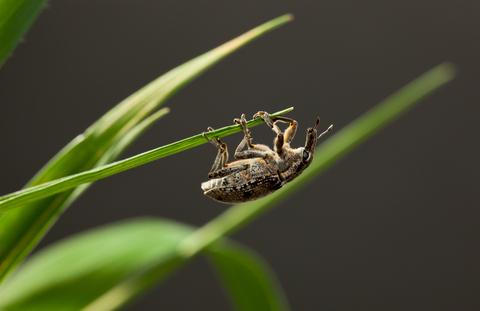
The garden is just one major hotspot for pests and, sadly, sometimes it can be extremely difficult to get rid of the pesky insects that keep eating your cabbage or attacking your lawn. Of course, whilst artificial grass will help with the latter, you still need to be vigilant when it comes to spotting pests and the trails they leave behind in the garden.
So, keep reading to see just three garden pests to watch out for as we move into the warmer months.
Black Vine Weevil
The first outdoor signs of Black Vine Weevils are usually around May/June time, and they tend to leave behind damage to plants, particularly potted ones. Shrubs and small trees are also at risk, and you can identify these insects by the distinct semi-circle nibbles left behind, normally on the side of leaves.
In terms of feeding times, adults tend to be nocturnal, which, unfortunately, makes them a little more difficult to catch in the act. The main treatment for this pesky pest is chemical.
Aphids
Summer is the prime time for Aphids, thanks to the warmer weather, which can provide the perfect breeding conditions, making it more difficult for homeowners to contain the situation in their gardens. Known to feed on most plants, Aphids can be extremely detrimental to the growth and health of your garden plants.
As for behaviour, they make a habit of travelling in clusters, so be sure to check buds and the bottom of leaves. Treatment for these insects is chemical, as with Black Vine Weevils, though there are organic options too, which include inviting Aphid predators, like ladybirds, into your garden.
Leather Jackets
As the larvae of Crane Flies, which are completely harmless to your garden, Leather Jackets will be out and about, seeking to destroy your pristine lawn by gnawing away at the roots. This isn’t to forget their tendency to also attack cereal crops. Unlike the above, Leather Jackets will usually make an appearance in August and leave behind wilted flowers and plants, as well as yellow-brown patches on your grass.
Treatment for these particular larvae is organic, which includes regular inspections and welcoming natural predators into your garden and lawn.
These are just three insects to watch out for this spring/summer. Of course, there are plenty more out there, all of which make a habit of being a nuisance in your garden. As mentioned though, artificial grass can help, especially with the latter insect.
So, feel free to browse our site for more information or stay on our blog to see how to use fake grass, as well as the benefits it brings!
